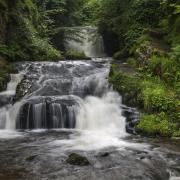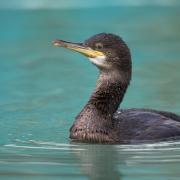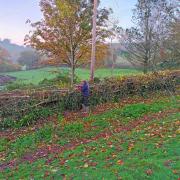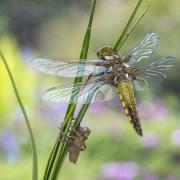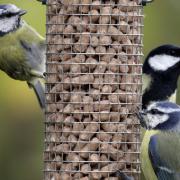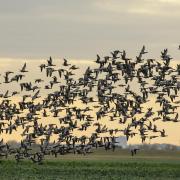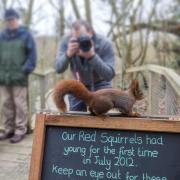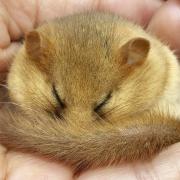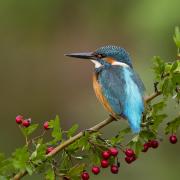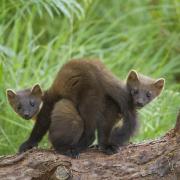Kelvin Boot joined staff from the Plymouth Marine Laboratory on an ecological survey to investigate life on the seabed off Plymouth.
Nosing through the naval ships and fishing fleets, the flotillas of yachts, dinghies and the leviathan cruise ships and ferries that populate one of our busiest ports, the Plymouth Marine Laboratory's vessel Plymouth Quest follows a steady course to a location 12 miles out. Every two months for the next two years scientific teams will be conducting surveys in order to gain a greater understanding of how life on the seafloor ticks.
Dr Mike Kendall, who is leader for the benthic survey, has worked all over the world yet still finds the sea on his own doorstep fascinating. He explained the need for a survey in one of the best-studied stretches of sea on the planet: "We have a good idea of the habitats around here," he said, "but little idea of how they live and how they fit into the ecological jigsaw puzzle, or how they contribute to the overall community."
I am astounded. We sail across them, fish them, dredge them, build into them, capture their energy and exploit their minerals, but what we know about the sea beds of the UK and Europe is pitifully small. Mike puts it into context: "We estimate the total sampling carried out in Western European waters amounts to around 20,000 grabs. This sounds a lot, but if you put all the sediment together, it would only cover half a football pitch - a bit like a full stop on a car park."
We drop anchor and the sampling multi-corer is lowered. An elegant stainless-steel frame carries four acrylic tubes beneath the surface with barely a ripple before it drops to the seabed. The tubes are then slowly propelled beneath the surface by the momentum of a heavily damped piston. The winch is thrown into reverse and as the tubes are withdrawn a clever door snaps shut to contain the sample.
Back on deck, the tubes and cores are detached and placed in a holding tank where air bubbling through the water ensures the contents stay alive until they get back to the lab. One sample has been ruined by a swimming crab, which allows Mike to look at some of the animals living in it. As well as a couple of swimming crabs there's an elephant tusk shell and a beautiful fan worm, which in its habitat projects a crown of feathery tentacles to capture food.
Next, a grab scoops up a larger piece of sediment. What at first appears as lifeless sandy mud is teeming with life, most of it very small, but it's the smaller stuff that makes the ecology work and moves nutrients around the system. As Mike guides me through the sediment, there's an exclamation from researcher James Highfield who has found an Upogebia mud shrimp. The small, pink-orange animal stands out from the brown of the mud.
"This animal is very important in the chemistry of the seabed," says James. "It creates burrow systems and cycles nutrients vital to other animals living down there. These shrimps help drive the whole system. They are creating the foundations for the seabed community; they are the ecosystem engineers.
Mike finds more elephant tusk shells, each housing a lodger called Phascolion, a worm that few will have heard of and even fewer will have seen. He explains that although the worms are really common, as with around 95% of the species, little is known about what they feed on or how and when they reproduce, let alone how long they live or how fast they grow. "If we are to look after our seabed we have to know these things," he asserted.
At one point I overhear Mike and James discussing the relative merits of one species of worm over another. It's like Top Gear with worms not cars - the finer points of a shrimp's anatomy being debated, not fuel injectors.
Next, it's time to deploy the dredge, which looks like something from oceano-graphic surveys of the 19th century, but as Mike points out, it does its job and if data from way back are to be compared to those today, the same methods have to be used.
In a few minutes the dredge samples a 60cm wide and half-kilometre-long transect of the seabed surface. This snapshot will collect everything above the 5mm mesh size.
After it comes to the surface, the whole science team, resplendent in multi-coloured kitchen gloves, pluck creature after creature as the hose washes them clean off the sand that has been their home. The tray is alive with every shape and colour of marine animal. A tangle of slender-limbed spider crabs contains five different species; at least another half dozen types of crabs are spotted. I'm amazed that even the most delicate of creatures have survived the journey from seabed to sample table intact. Even the aptly named brittle stars - at least three species, with their slender, fragile arms - suffer no damage. As more mud and sand are washed away, this becomes a shell-collector's dream. I can identify a pelican's foot, otters, turrets and even a delightful cowrie, but there are many I can only guess from illustrations in books.
Glimpses of the soap opera that is life on the seabed are evident in shells with holes drilled by a necklace shell or a sting winkle in search of succulent flesh hidden between the locked shells of a bivalve, evidence of the daily life-and-death struggles beneath the surface that remain a mystery even this close inshore.
MORE INFO
Plymouth Marine Laboratory (PML) is a world-leading research centre particularly concerned with aspects of coastal seas. Research strands include climate change, ocean acidification, socio-economics of the sea, remote sensing and eco-system modelling.
To find out more about the work of the PML, see www.pml.ac.uk



